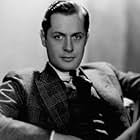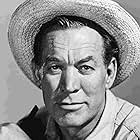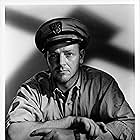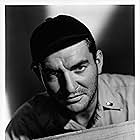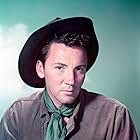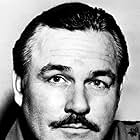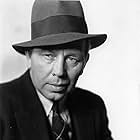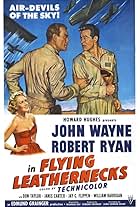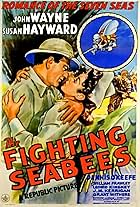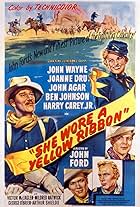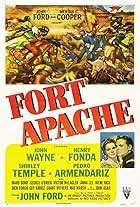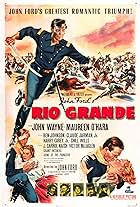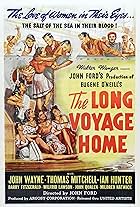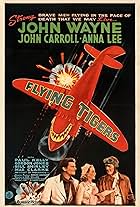IMDb RATING
7.2/10
9.5K
YOUR RATING
A Navy commander fights to prove the battle-worthiness of the PT boat at the start of World War II.A Navy commander fights to prove the battle-worthiness of the PT boat at the start of World War II.A Navy commander fights to prove the battle-worthiness of the PT boat at the start of World War II.
- Nominated for 2 Oscars
- 2 nominations total
Robert Montgomery
- Lt. John Brickley
- (as Robert Montgomery Comdr. U.S.N.R.)
Storyline
Did you know
- TriviaBy the time the film was finished the Japanese had surrendered, so MGM pushed the release date back to December 1945. With the war over, the film opened to enthusiastic reviews but low turnout at the box office. As John Wayne later said, "People had seen eight million war stories by the time the picture came out, and they were tired of them."
- GoofsA frame at the end of the movie said, "We shall return - General Douglas MacArthur". In fact, the White House tried to get the general to change his famous quote to "we" but he refused, saying he failed to see the purpose. It should read, "I shall return."
- Quotes
Lt. 'Rusty' Ryan: [as they watch the inspectors drive away] Wonderful the way people believe in those high powered canoes of yours.
Lt. John Brickley: Don't you believe in them, Rusty?
Lt. 'Rusty' Ryan: And I let you sell me that stuff about a command of my own.
Lt. John Brickley: You're skipper of the 34 boat, aren't you?
Lt. 'Rusty' Ryan: I used to skipper a cake of soap in the bathtub, too.
[He walks off]
- Crazy creditsClosing quote: "We Shall Return" Douglas MacArthur, General of the Army
- Alternate versionsMGM produced a different version, dubbed and with credits in Spanish, probably to be used by television stations. This version omits the final sequence (nearly more than 15 minutes of running time) and the film ends a previous scene with Robert Montgomery and John Wayne saying farewell to the soldiers that had to remain in the Phillipines, then the scene cuts to a plane leaving the island and to a "The End" title in Spanish. This version aired in Argentina in a cable station called "Space". Turner Network Televsion, in all Latin American countries, used to air the film in its original form. However, they lifted the Spanish language dubbing from the old version and, without any explanation why, the last minutes of the film play in English.
- ConnectionsEdited into Malaya (1949)
- SoundtracksThe Monkeys Have No Tails in Zamboanga
(uncredited)
Music adapted from the official march of the Philippine Constabulary
Written by by G. Savoca (lyrics)
[Sung in the officer's club at the beginning of the movie.]
Featured review
This is a memorable war film. Unlike other war films which depict glamorous battles, brutal campaigns and heroic exploits, this film focuses on average sailors who are merely doing a job. This often touching story is sandwiched around the real life escape of General and Mrs. McArthur from Corregidor at the beginning of World War II. The film does a good job portraying the collapse of American and Fillipino resistance in late 1941 and early 1942. The war is going badly, and this film does not try to sugar coat it. General Martin's character (played by Jack Holt) articulates this well at the end of the film. "The end is near here", he says.
John Wayne plays Rusty, a somewhat disgruntled officer who is unhappy about serving on a patrol torpedo (PT) boat. "Plywood dreams", he calls them in one scene. The fortunes of war intervene and Rusty and his comrades must fight the invading Japanese. Wayne's performance is memorable here, because it is uncharacteristic of his work. Wayne is not the macho heroic fighter that we see in most of his other war films. Here he is a professional sailor doing his job the best he knows how. At the end he predictably tries to be a hero, but star Robert Montgomery polites reminds him that there are other priorities. "Who are you fighting for", he asks. Wayne's character has depth. Uncharacteristically for Wayne he is even a little unsure of himself at times. This is particularly evident in his relationship with the young nurse played by Donna Reed. This is a different Wayne.
Robert Montgomery's performance as the commander of the squadron is also first rate. Like Wayne he is a professional who wants to do his job. The burden of command falls on him as he begs, cajoles and even blackmails fellow sailors to put his PT's in the war. Montgomery's performance is understated, credible and moving. It may be his best work.
This film is a collection of images. The destruction at Subic Bay in a Japanese air strike comes the closest to graphic violence of any scene in the movie. Instead of bodies, we see fires, smoke, debris and the faces of dazed servicemen and civilians. In another scene Wayne and Montgomery stand on a long dock stretching out into an empty inlet. "Are you looking for the Arizona, too," Rusty asks. The scenes depicting the escape of the McArthur's are well staged and realistic. The scenes of the defeated American army retreating on Mindanao show graphically that the war is not going well. The last image in the film with the last American plane to leave the Phillipines flying over a tropical beach at sunset is one of the most memorable in any war film. The words "I shall return" which appear on the screen are trite and unnecessary. Director John Ford has created a collage of memorable images here.
This film is slow paced for a war film, but it works. There is sufficient action, but there are interludes of peace and tranquility. There is a candlelight dinner for Rusty and his girl. There are a few moments near the end in a bar. In another scene Wayne visits with an elderly shipwright. The journey with the McArthurs provides another appropriate interlude in the middle of the film. There are even light moments interspersed. In one of these Marshal Thompson is inspecting the galley and asks derisively "What kind of soup is this?" When told it's not soup but dishwater he goes quickly to his next stop.
This is a simple story of fighting men doing a job that isn't considered particularly important. John Ford's excellent direction turns these mundane moments into one of the most memorable war films ever. Star Robert Montgomery even had a chance to direct in this film when Ford was injured in a fall. I liked this film and would recommend it without reservations.
John Wayne plays Rusty, a somewhat disgruntled officer who is unhappy about serving on a patrol torpedo (PT) boat. "Plywood dreams", he calls them in one scene. The fortunes of war intervene and Rusty and his comrades must fight the invading Japanese. Wayne's performance is memorable here, because it is uncharacteristic of his work. Wayne is not the macho heroic fighter that we see in most of his other war films. Here he is a professional sailor doing his job the best he knows how. At the end he predictably tries to be a hero, but star Robert Montgomery polites reminds him that there are other priorities. "Who are you fighting for", he asks. Wayne's character has depth. Uncharacteristically for Wayne he is even a little unsure of himself at times. This is particularly evident in his relationship with the young nurse played by Donna Reed. This is a different Wayne.
Robert Montgomery's performance as the commander of the squadron is also first rate. Like Wayne he is a professional who wants to do his job. The burden of command falls on him as he begs, cajoles and even blackmails fellow sailors to put his PT's in the war. Montgomery's performance is understated, credible and moving. It may be his best work.
This film is a collection of images. The destruction at Subic Bay in a Japanese air strike comes the closest to graphic violence of any scene in the movie. Instead of bodies, we see fires, smoke, debris and the faces of dazed servicemen and civilians. In another scene Wayne and Montgomery stand on a long dock stretching out into an empty inlet. "Are you looking for the Arizona, too," Rusty asks. The scenes depicting the escape of the McArthur's are well staged and realistic. The scenes of the defeated American army retreating on Mindanao show graphically that the war is not going well. The last image in the film with the last American plane to leave the Phillipines flying over a tropical beach at sunset is one of the most memorable in any war film. The words "I shall return" which appear on the screen are trite and unnecessary. Director John Ford has created a collage of memorable images here.
This film is slow paced for a war film, but it works. There is sufficient action, but there are interludes of peace and tranquility. There is a candlelight dinner for Rusty and his girl. There are a few moments near the end in a bar. In another scene Wayne visits with an elderly shipwright. The journey with the McArthurs provides another appropriate interlude in the middle of the film. There are even light moments interspersed. In one of these Marshal Thompson is inspecting the galley and asks derisively "What kind of soup is this?" When told it's not soup but dishwater he goes quickly to his next stop.
This is a simple story of fighting men doing a job that isn't considered particularly important. John Ford's excellent direction turns these mundane moments into one of the most memorable war films ever. Star Robert Montgomery even had a chance to direct in this film when Ford was injured in a fall. I liked this film and would recommend it without reservations.
- How long is They Were Expendable?Powered by Alexa
Details
- Runtime2 hours 15 minutes
- Color
- Aspect ratio
- 1.37 : 1
Contribute to this page
Suggest an edit or add missing content












